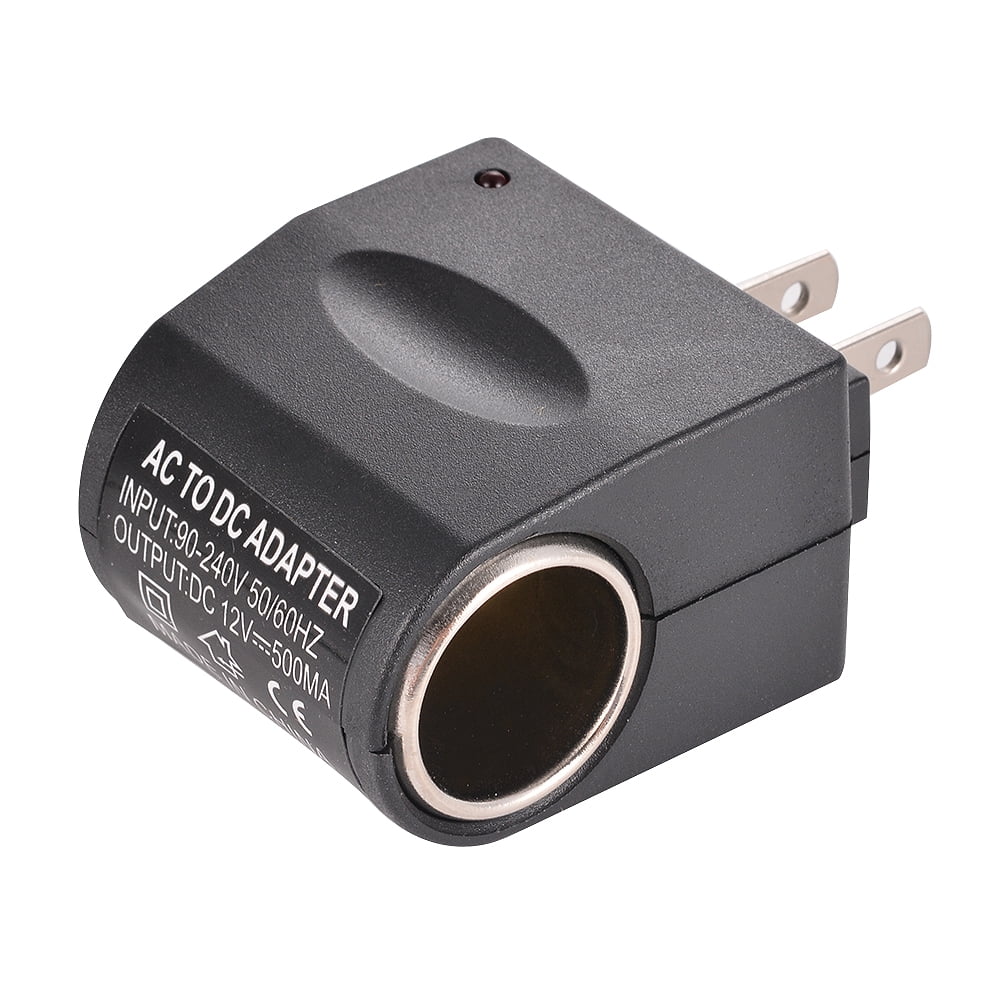


#ADAPTER FOR CIGARETTE LIGHTER PLUG PORTABLE#
UL2089 was developed to cover the requirements for portable adapters rated 24 V DC or less that are intended to be supplied from the battery powered electrical system of a vehicle. Most automobiles connect the negative terminal to the frame of the vehicle (negative ground).ġ2 volt auto connectors are made to comply with a standard by Underwriters Laboratories for safety. For the 12 volt systems, the center contact is the positive terminal and the shell is the negative terminal. The sockets and mating plugs are defined in the ANSI/SAE J563 specification. The modern "automatic" removable automotive V-Coil lighter was developed by Casco in 1956, for which it received U.S. The circuit was closed either by pressing a button or removing the igniter from its socket. As the removable plug was returned to the socket, the wires were reeled back into it. In the reel-type lighters, the igniter unit was connected with a source of current by a cable which was wound on a spring drum so that the igniter unit and cable could be withdrawn from the socket and be used for lighting a cigar or cigarette. In 1928, the Connecticut Automotive Specialty Company (Casco) in Bridgeport patented its version of an automotive cigarette lighter, which used a cord and reel. They were a standard feature by the 1950s.

In the United States, cigarette lighters started appearing in 1925-1926 in some models. The igniter was heated in the socket and then manually removed for use after an appropriate time interval. Patent 1,376,154 was issued for a so-called "wireless" or "cordless" lighter with a removable element. Before the Great Depression, cigarettes overtook cigars in sale, and they became more popularly known as "cigarette lighters", though they have remained the diameter of a standard cigar of 21 millimetres (0.83 in), or a 52 ring gauge. In the 1890s, these tools were sold as electrical cigar lighters ( Cigarrenanzünder), and later as Zigarrenanzünder in the major German warehouse catalogues. The electrical cigar-lighter was invented and patented in the early 1880s by the Swiss-Austrian inventor Friedrich Wilhelm Schindler. If wired directly rather than through the ignition, an empty car battery can be charged through the outlet from an external power source, which is more convenient albeit slower than currents supported through electrical clamps on the car battery. Large appliances such as hair dryers or toasters draw too much power to be fed from an auxiliary power socket. The 12 V power circuit is protected by a car fuse, often rated at 10 to 20 amperes, which amounts from 120 to 240 watts.

The voltage of the power outlet is usually near 12 V DC, and may be elevated between 13.5 V to 15 V while the engine is running. Some vehicles may have more power outlets: usually one for the front passengers, one for the rear passengers and one for the luggage trunk. In most vehicles, at least one car outlet is present. Such include mobile phone chargers, cooling fans, portable fridges, electric air pumps, and power inverters. Auxiliary power outlet for front passengers Metal and plastic cigarette lighter receptacles Mobile phone charger for use in automobiles Power inverter for producing 60 Hertz square wave power from an automobile outlet as a way to power home appliances.Īn automobile auxiliary power outlet (also known as car cigarette lighter or auxiliary power outlet ) in an automobile was initially designed to power an electrically heated cigarette lighter, but became a de facto standard DC connector to supply electrical power for portable accessories used in or near an automobile directly from the vehicle's electrical system.
#ADAPTER FOR CIGARETTE LIGHTER PLUG ISO#
Not to be confused with the similarly looking but incompatible ISO 4165 sockets/plugs (also called a 'Hella', 'Powerlet' or 'Merit') used on Motorcycles (esp.


 0 kommentar(er)
0 kommentar(er)
